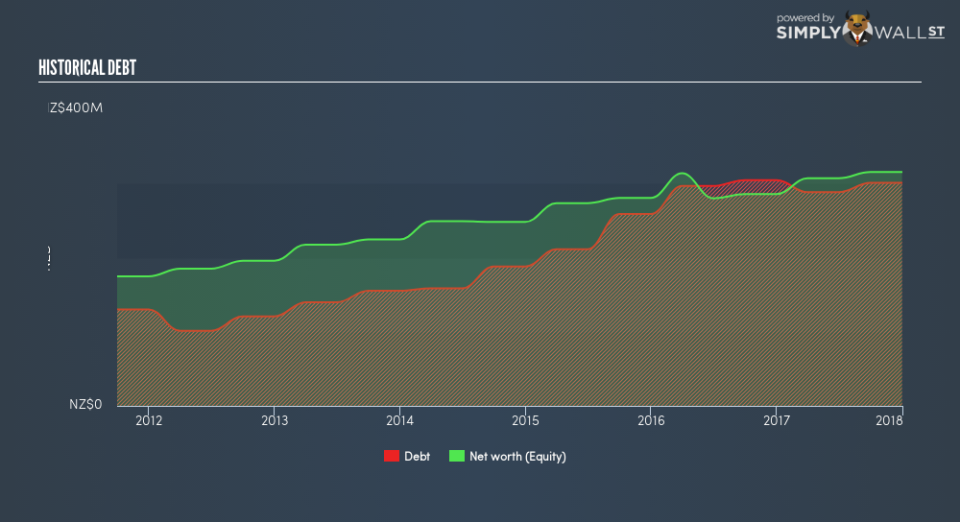Delegat Group Limited (NZSE:DGL): Time For A Financial Health Check

While small-cap stocks, such as Delegat Group Limited (NZSE:DGL) with its market cap of NZ$1.01b, are popular for their explosive growth, investors should also be aware of their balance sheet to judge whether the company can survive a downturn. So, understanding the company’s financial health becomes crucial, as mismanagement of capital can lead to bankruptcies, which occur at a higher rate for small-caps. Here are few basic financial health checks you should consider before taking the plunge. Nevertheless, I know these factors are very high-level, so I suggest you dig deeper yourself into DGL here.
How does DGL’s operating cash flow stack up against its debt?
DGL has sustained its debt level by about NZ$300.9m over the last 12 months made up of current and long term debt. At this constant level of debt, the current cash and short-term investment levels stands at NZ$3.9m for investing into the business. Additionally, DGL has produced NZ$58.6m in operating cash flow during the same period of time, resulting in an operating cash to total debt ratio of 19.5%, signalling that DGL’s debt is not appropriately covered by operating cash. This ratio can also be interpreted as a measure of efficiency as an alternative to return on assets. In DGL’s case, it is able to generate 0.19x cash from its debt capital.
Can DGL pay its short-term liabilities?
At the current liabilities level of NZ$23.2m liabilities, it appears that the company has been able to meet these obligations given the level of current assets of NZ$173.4m, with a current ratio of 7.48x. Though, anything above 3x is considered high and could mean that DGL has too much idle capital in low-earning investments.
Does DGL face the risk of succumbing to its debt-load?
DGL is a relatively highly levered company with a debt-to-equity of 95.4%. This is not unusual for small-caps as debt tends to be a cheaper and faster source of funding for some businesses. No matter how high the company’s debt, if it can easily cover the interest payments, it’s considered to be efficient with its use of excess leverage. A company generating earnings after interest and tax at least three times its net interest payments is considered financially sound. In DGL’s case, the ratio of 5.79x suggests that interest is appropriately covered, which means that lenders may be inclined to lend more money to the company, as it is seen as safe in terms of payback.
Next Steps:
DGL’s debt and cash flow levels indicate room for improvement. Its cash flow coverage of less than a quarter of debt means that operating efficiency could be an issue. However, the company exhibits an ability to meet its near term obligations should an adverse event occur. Keep in mind I haven’t considered other factors such as how DGL has been performing in the past. You should continue to research Delegat Group to get a more holistic view of the stock by looking at:
Future Outlook: What are well-informed industry analysts predicting for DGL’s future growth? Take a look at our free research report of analyst consensus for DGL’s outlook.
Valuation: What is DGL worth today? Is the stock undervalued, even when its growth outlook is factored into its intrinsic value? The intrinsic value infographic in our free research report helps visualize whether DGL is currently mispriced by the market.
Other High-Performing Stocks: Are there other stocks that provide better prospects with proven track records? Explore our free list of these great stocks here.
To help readers see past the short term volatility of the financial market, we aim to bring you a long-term focused research analysis purely driven by fundamental data. Note that our analysis does not factor in the latest price-sensitive company announcements.
The author is an independent contributor and at the time of publication had no position in the stocks mentioned. For errors that warrant correction please contact the editor at editorial-team@simplywallst.com.

 Yahoo Finance
Yahoo Finance 
